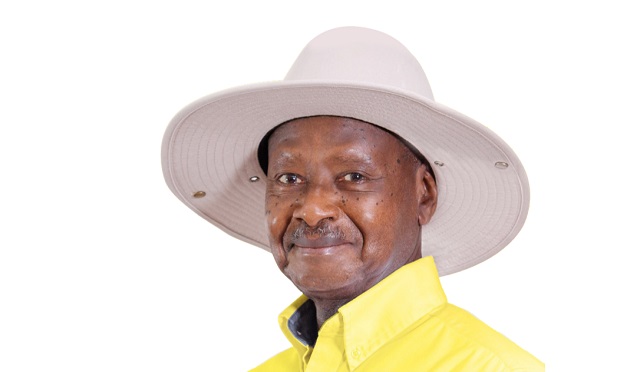
How to keep old comrades secure in changing NRM
Kampala, Uganda | MUBATSI ASINJA HABATI | Whether President Yoweri Museveni accepts it or not the next generation is gaining traction within his party; the ruling National Resistance Movement (NRM). The bad news, according to analysts, is that the evolution in leadership appears to be developing without plan mainly because Museveni is stuck at the top with fellow old jajas.
As one political observer put it: “In the NRM party, Museveni is like the sun with the rest of the leaders in that party more like the moon or even stars. The moon can only draw its light from the sun.”
But for how much longer can Museveni cling on, many are asking, especially as he loses most of his old-guard comrades?
Museveni’s grip on the politics within his party and the country in general has appeared firm. For over two decades, the NRM Central Executive Committee (CEC) which is the party’s highest decision making organ has since its inception been dominated by historicals from NRM’s military and civilian wings who participated in the bush war of 1981-1986 that brought Museveni to power.
But in the recent riotous NRM primaries he has appeared weak and without the power to defend even his most trusted comrades who were kicked out by the next generation of leaders. For the first time, all leaders in CEC apart from Museveni had to fight for their positions.
The outcome of the recent internal NRM elections, especially for the fights over the top positions in the party’s main policy and administrative body, the CEC, have left many questioning how much longer Museveni can hold on to power.
The CEC membership comprises the national chairperson, first national vice chairperson, second national vice chairperson(female), and six vice chairpersons representing the regions of Uganda- east, central, north, west, Kampala and Karamoja.
“In the NRM party, Museveni is like the sun with the rest of the leaders in that party more like the moon or even stars. The moon can only draw its light from the sun.”
Other CEC members include the party’s secretary general, national treasurer, deputy secretary general, deputy national treasurer, chairperson of NRM parliamentary caucus, all chairpersons of the national special league committees (like youth, women, elderly, entrepreneurs and persons with disabilities), chairpersons of commissions, and such number of national secretaries and deputy national secretaries as party National Executive Committee (NEC) may determine.
In the early days of the NRM government, President Museveni often used the military High Command (now the Defence and Military Council) to make decisions. He still heavily relies on the military for his stay in power. In January 1986 he chaired the high command meeting that selected the 38 members of the first National Resistance Council which acted as the Uganda Parliament.
Today CEC vets and recommends those who become the NRM party top leaders; including those who wish to become speaker of parliament. According to the NRM constitution, the NRM CEC is mandated to perform 11 functions.
These functions include providing and exercising political leadership in the country, formulating policy for consideration by NEC, supervising the day-to-day conduct of the organization’s activities, appointing organizational functionaries from amongst members of NRM, propagating the NRM policies, and recommending to NEC, NRM candidates seeking nomination for the offices of national chairperson, vice chairperson, secretary general, deputy secretary general and national treasurer and presidential candidate for NRM.
Others are advising the chairperson and the National Executive Council in the performance of their functions, implementing the decisions of the National Conference and NEC, ensuring that all organs of NRM function properly and implement the policies and decisions of NRM, as well as prescribing rules and regulations for the functioning and operation of special organs and caucuses.
Under its rules, the NRM renews membership of CEC after every five years. But after the latest analysis, President Museveni who is CEC chairman and his first vice chairman, Moses Kigongo, are looking increasingly isolated at the top. Kigongo has always been the vice chairman since the days of the National Resistance Council (NRC) in 1986.
Historicals humiliated
In an unprecedented spectacle, Kigongo who has been unopposed in his position since then was this time made to suffer the indignity of campaigning and pinning posters on streets as he battled to cling on amidst fierce opposition. Kigongo was being challenged among others by Kefa Mafumo, a much younger Presidential Assistant in charge of Youth Affairs who has never held any position in the party.
Mafumo’s challenge created such intense apprehension that the party Secretary General, Justine Kasule Lumumba, and the party Electoral Commission chairman, Tanga Odoi, and Museveni’s lawyer, Kiryowa Kiwanuka, attempted to block him on a technicality but failed. They claimed that because Mafumo works in State House he is a civil servant who should have resigned before joining partisan political activity.
Mafumo reportedly silenced them when he pointed out that Maj. Gen. Matayo Kyaligonza who is an ambassador to Burundi and Dorothy Hyuha who is an ambassador to Kenya would also not qualify because they are, technically, civil servants. It took the intervention of Museveni to convince Kigongo’s challengers, including former CEC member Francis Babu, to step down and leave Kigongo unopposed.
“Museveni feared to be left naked amidst new younger faces,” said one commentator, “that is why he fought to retain Kigongo.” But Museveni’s other ageing cronies were not so lucky.
 The Independent Uganda: You get the Truth we Pay the Price
The Independent Uganda: You get the Truth we Pay the Price


